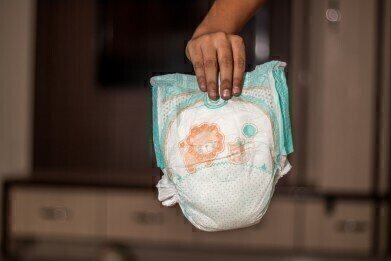Environmental Laboratory
Should We Stop Using Disposable Nappies?
Dec 19 2018
The average baby will require anywhere between six and 12 nappy changes per day, resulting in the consumption of 4,000 nappies before they begin using the potty. By the time they have that particular skill mastered, they will have gone through 5,000 of the things, resulting an incredible three billion per year in England and Wales alone.
In the middle of the 20th century, disposable nappies arrived on the market, significantly reducing the amount of work involved in changing a little one’s underwear. Despite their widespread popularity, many concerned individuals have raised fears over their environmental impact, which is undoubtedly sizable. However, it’s not altogether clear that reusable nappies are all that much better for the planet.
The case against disposables
Although they may be convenient and easy to use, three billion nappies is no small figure. Indeed, it actually accounts for between 2% and 3% of all British household waste and given that it ends up in landfill sites, it inevitably contributes to the increasing concern over methane emissions. The 5,000 nappies generated by one baby could be responsible for releasing up to 630kg of methane into the atmosphere over a 500-year period.
Their use also entails logistical disadvantages. On the one hand, the price of purchasing all those nappies equates to roughly £800 by the time the child is capable of using the potty, while ferrying to and from the shops will contribute to your carbon footprint and your general fatigue in the process. Finally, finding the place to store all those nappies in your home can be a challenge.
The case against reusables
A scheme to reintroduce reusable nappies in London resulted in 1,500 fewer tonnes of waste being sent to landfill in 2009. So that’s good news, right? Well, for the economic concerns over the price of new nappies, the practical concerns over where to store them and the waste concerns over how much is being sent to landfill, sure. But in terms of energy efficiency, reusables actually fare worse than disposables.
A 2008 report by the Environment Ministry found that consumption of disposable nappies over a two-and-half-year timeframe would result in carbon emissions of 550kg, while reusables would emit 570kg! The report assumed that parents would wash the nappies in a machine at 60°C and tumble dry 25% of all loads, and these maintenance costs would result in emissions which outweighed those of the disposables.
A happy medium?
Therefore, those looking to curb their carbon footprint through reusable nappies should consider using a full, eco-friendly washing cycle and line-drying each and every load they wash. There are also bespoke nappy washing services available, which will pick up and drop off nappies at your home to take the stress and legwork out of the process for you.
On the other hand, those who prefer to continue using disposables may well wish to investigate biodegradable options. When the nappies themselves are made from compostable materials, they place a lesser strain on landfills and emit fewer methane emissions. Recycling is also another option being investigated by the scientific community, though is still very much at the drawing board stage.
Digital Edition
AET 28.2 April/May 2024
May 2024
Business News - Teledyne Marine expands with the acquisition of Valeport - Signal partners with gas analysis experts in Korea Air Monitoring - Continuous Fine Particulate Emission Monitor...
View all digital editions
Events
Jul 30 2024 Jakarta, Indonesia
China Energy Summit & Exhibition
Jul 31 2024 Beijing, China
2024 Beijing International Coal & Mining Exhibition
Aug 07 2024 Beijing, China
IWA World Water Congress & Exhibition
Aug 11 2024 Toronto, Canada
Aug 25 2024 Stockholm, Sweden and online









.jpg)








